A recent discovery, courtesy of a book written by Colin Pomeroy - 'Dorset, The Royal Airforce', was that during the Second World War, there were decoy airfields built to divert the enemy bombers away from the actual RAF airfields.
More interestingly, is that these decoy sites are mostly unknown and some still exist to this day in plain sight.
To the uninitiated eye, they appear to be derelict structures of brick and concrete and do not display any clear signs of what they are there for. One such example is that of a decoy site in the middle of a golf course in my local area. You would stumble across it and not be any the wiser that it had a significant role to serve in the protection of our local RAF bases.
Based at the 9th hole of Moors Valley Leisure Park Golf Club, located at Three Legged Cross, Dorset lies a non-descript brick structure that served as a command post for the decoy airfield.
A couple of soldiers would have been billeted there and in the eventuality of potential bombing raids, their task would be to illuminate the decoy airstrip therefore diverting attention away from RAF Ibsley and RAF Hurn.
We visited the site today (after walking the length and breadth to find it. It can be found located between the 9th and 10th holes and from one side looks like a dense bush until you see the bomb-blast shields covering both of the doorways.
This DREM-Q Control Shelter, known as Q160b, was constructed with two doorways with adjacent blast walls to protect the occupants. Inside were two separate compartments, one for the generators and one for the control panels and the men controlling them.
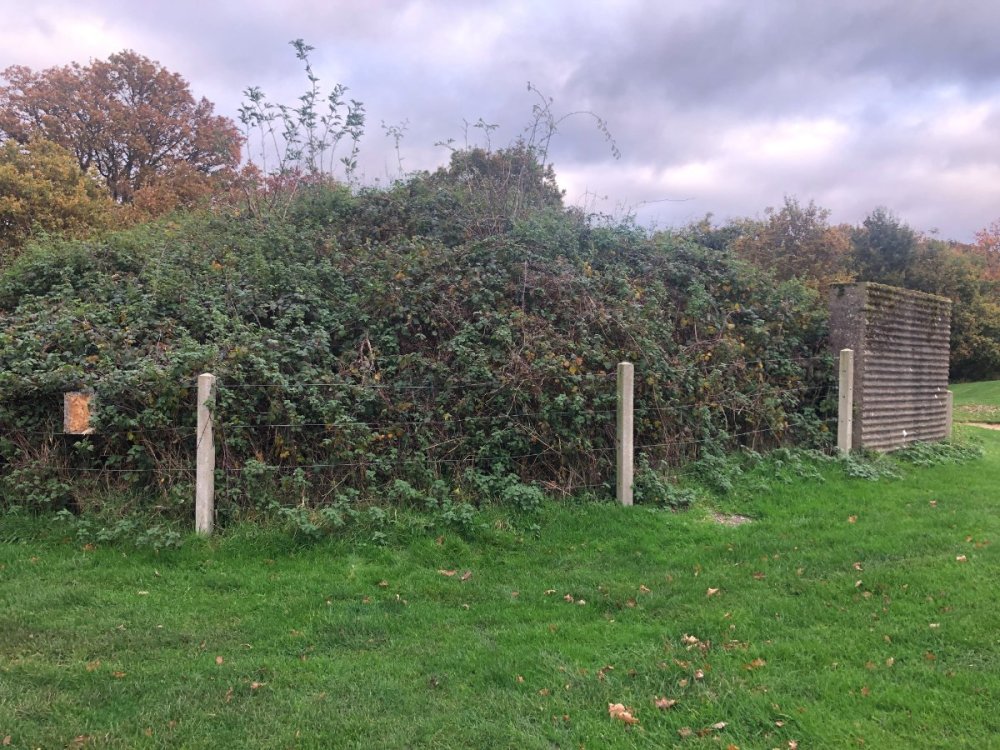
Below is an extract from Moors Valley website. https://moors-valley.co.uk/learning/decoy-bunker/
This Drem-Q type bunker, known as Q160b, housed two generators to power a flare path of lights installed to the south. By mimicking the appearance of a real airfield at night, the lights were designed to draw enemy bombers away from nearby RAF Ibsley and RAF Hurn during World War II. Decoys were also used to draw attention away from towns, cities, factories and oil installations. They were born through a collaboration between an Air Ministry team and Sound City Films at Shepperton Studios – an elaborate illusion employing special effects to trick the enemy.
The flare path was almost 1km long made up of lights spaced approx. 100m apart. To prevent friendly aircraft attempting to land on the non-existent runway, each end had a bar of hooded red lights, only visible at low level.
This bombing decoy was used between 1942 and 1944. Operators walked the flare path every evening at dusk to test the lights. The ‘Decoy Men’ were probably the only servicemen inviting the enemy to attack them – in order to save thousands of others. The two entrances to the decoy were protected by a blast wall but bunkers like this one would probably not survive a direct hit.
- Original diagram of a single hooded flare path, photo of original document stored at the National Archives, Kew
- Extract from RAF Monograph, a 20 page extract from an original RAF Monograph – Decoy and Deception, produced by the Air Historical Branch
- Diagram of a Drem-Q shelter – based on Air Ministry drawing CTD 367/41
- Location of the flare path in the present landscape
- Geograph.org.uk website photographs of the bunker
- Instructions to operators from the National Records Office in Kew
- “One particularly terrifying night” air raid at Verwood
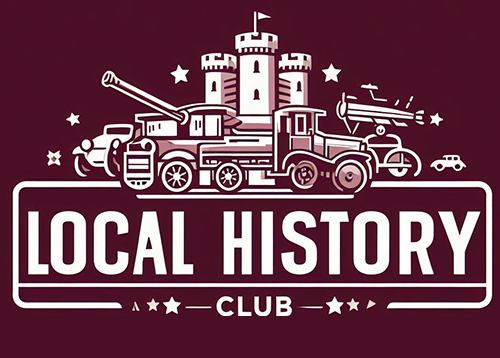
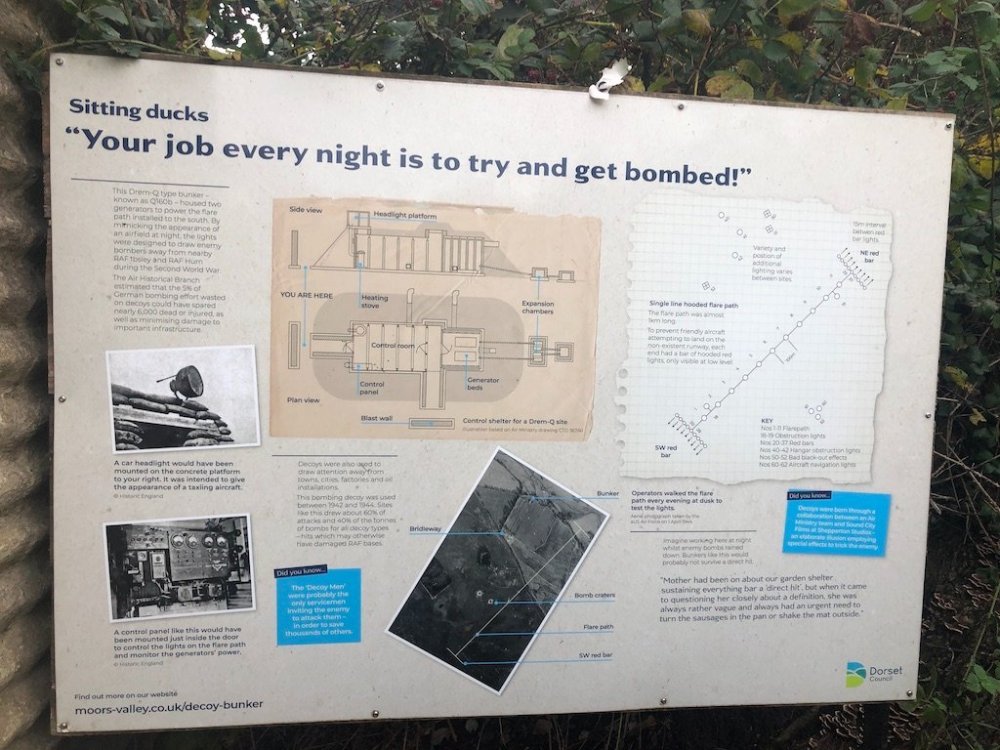
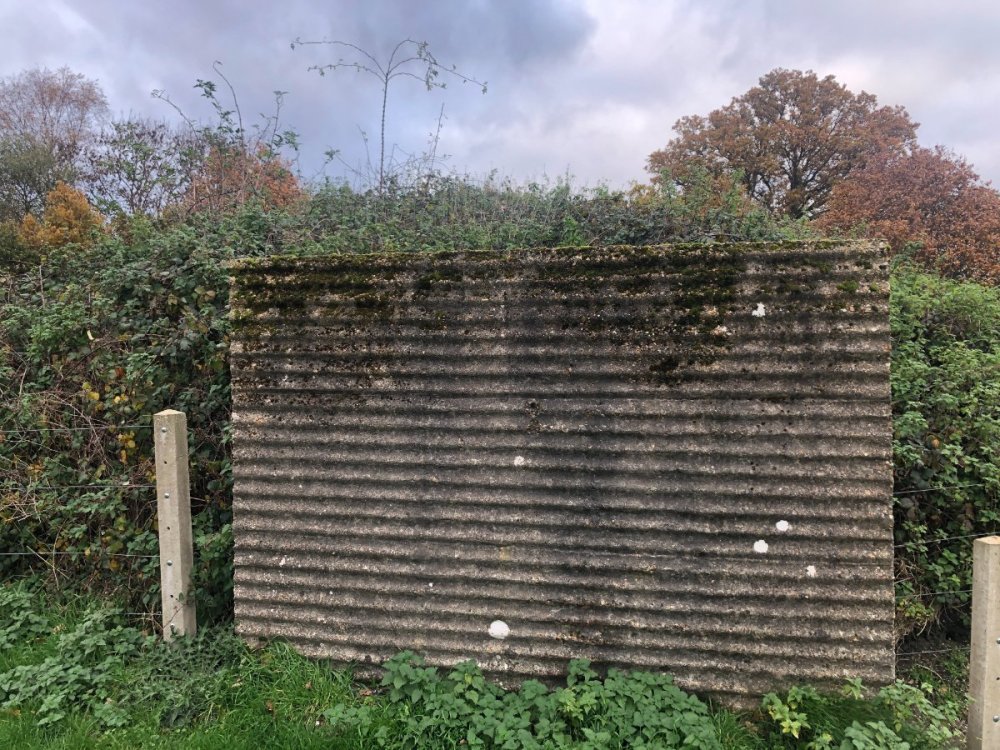
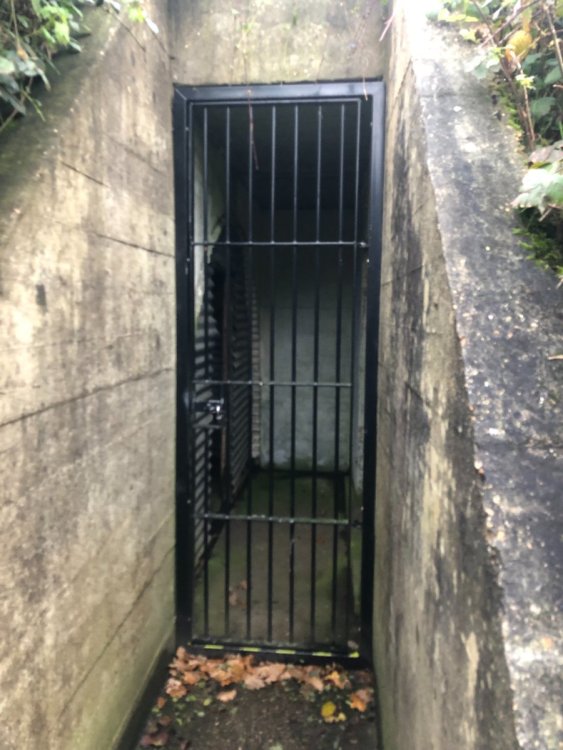





0 Comments
Recommended Comments
There are no comments to display.
Create an account or sign in to comment
You need to be a member in order to leave a comment
Create an account
Sign up for a new account in our community. It's easy!
Register a new accountSign in
Already have an account? Sign in here.
Sign In Now